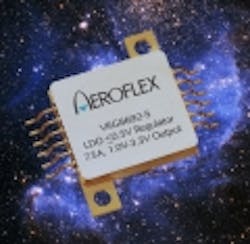Lockheed Martin to upgrade RMS minehunting underwater vehicle capability and reliability
WASHINGTON, 12 Dec. 2010. Engineers at Lockheed Martin Corp. will upgrade the capability, reliability, and maintainability of the U.S. Navy's AN/WLD-1 Remote Minehunting System (RMS) -- a 23-foot-long semiautonomous, semisubmersible diesel-powered submarine that locates and classifies undersea anti-ship mines -- under terms of a $20 million contract awarded Friday from the Naval Sea Systems Command in Washington.
The RMS, an unmanned underwater vehicle (UUV) designed to help safeguard military and commercial shipping from hidden underwater mines, often requires frequent repair or replacement, Navy officials say. This can be a problem when operating from the Navy's Arleigh Burke-class destroyers, which can accommodate only one of the RMS vehicles.
Although the Navy is designing the Littoral Combat Ship to accommodate two RMS vehicles to provide sufficient redundancy for the maintenance-heavy minehunting UUV, the RMS also has been found to have a difficult time reliably detecting and classifying mines in shallow waters with rough sea floors, Navy officials say.
As a result, the Lockheed Martin Undersea Systems division in Riviera Beach, Fla. -- the RMS designer and manufacturer -- is taking on the RMS Reliability Growth Program to upgrade the minehunting system's reliability and capability. Lockheed Martin will do the work at its Riviera Beach, Fla., and Syracuse, N.Y., facilities.
The RMS is essentially a small diesel-powered submarine with a snorkel and antenna mast that can function autonomously or under control of a human operator. The vehicle’s mast, which always protrudes from the water, gives the vessel over-the-horizon and line-of-sight radio communications, and continuous Global Positioning System navigation.
The RMS mission is to detect and pinpoint mines in the water so other systems can come back and destroy them later, or to enable Navy commanders to alter their missions to avoid mine fields. The RMS has an onboard camera, which helps the vehicle navigate and avoid obstacles, and its primary sensor payload is the Raytheon AN/AQS-20 Minehunting Sonar System, which the AN/WLD-1 tows behind it at variable depths to locate mines.
Navy officials have found that a proficient crew can use the RMS to detect and classify moored mines in deep water, or find moored and bottom mines in shallow water. The system's shallow-water capability, however, is limited to locations where the bottom is smooth and the clutter density is low. The RMS, Navy officials say, is less capable of detecting mines under other conditions.
For more information contact Lockheed Martin Mission Systems and Sensors online at www.lockheedmartin.com, or Naval Sea Systems Command at www.navsea.navy.mil.
